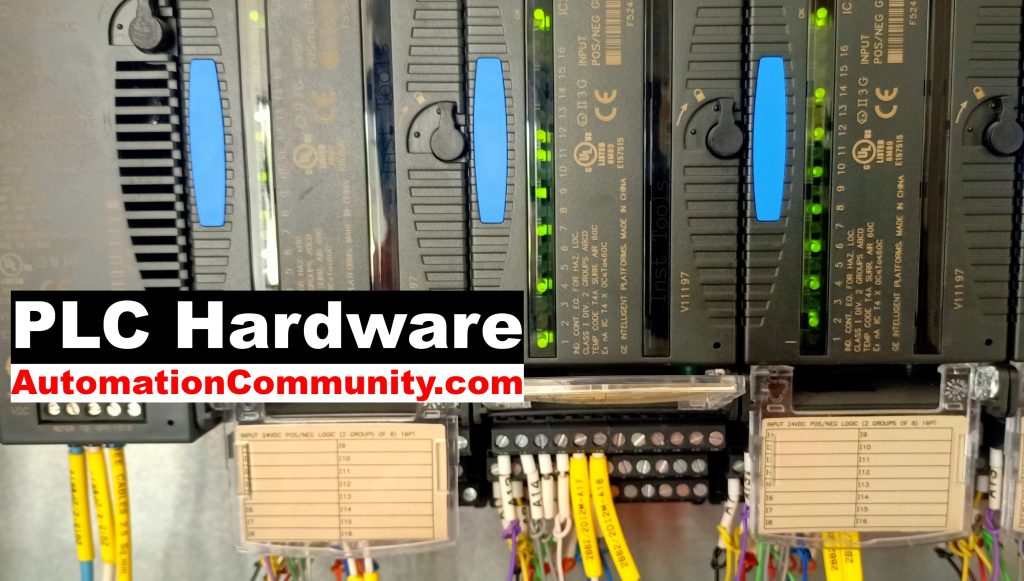PLC Hardware Questions and Answers – Automation Systems
PLC (Programmable Logic Controller) Hardware consists of the central processing unit (CPU), power supply, input/output (I/O) modules, communication modules, and various other accessories. Familiarity with PLC hardware is essential for engineers and technicians involved in automation and control systems.
PLC Hardware

Get in-depth insights into PLC Hardware with our comprehensive Questions and Answers guide. Discover the intricacies of CPU selection, I/O module configuration, power supply requirements, and communication protocols. Whether you’re a student or a professional in the field of industrial automation, this guide is an invaluable resource to expand your knowledge of PLC hardware.
What is the role of a CPU module in a PLC system?
The CPU module is the ‘brain’ of a PLC system. It executes the control program stored in its memory, processes data from input modules, and controls output modules based on the logic of the program.
Can you explain what an Input/Output (I/O) module is in a PLC?
I/O modules are the means through which a PLC interacts with the process it is controlling. Input modules collect data from sensors, while output modules send control signals to actuators.
How are PLC modules connected in a PLC system?
PLC modules are typically connected via a backplane or a bus system. This connection allows for communication between modules and to the CPU.
What is an analog I/O module in a PLC system?
Analog I/O modules process variable input or output signals, such as voltage or current. These modules can convert analog signals to digital for the PLC to interpret, or digital signals to analog to control an actuator.
How does a digital I/O module in a PLC system work?
Digital I/O modules deal with binary on/off states. An input module might interpret a switch being open or closed, while an output module could control the on/off state of a light.
Can you elaborate on what a communication module in a PLC system does?
A communication module enables a PLC to connect to networks or other PLCs, allowing for data exchange, remote control, and integration with SCADA or MES systems.
What is the function of a power supply module in a PLC system?
A power supply module provides the necessary power to the PLC system and its modules. It converts the incoming power source to the voltage levels required by the PLC components.
How is data stored in a PLC memory module?
A memory module stores the PLC’s program, data, and configuration. This data can be categorized into different types, like program memory, data memory, and system memory.
What is a specialty module in a PLC system?
Specialty modules provide specific functionalities not covered by standard I/O or communication modules. Examples might include motion control modules, PID control modules, or high-speed counter modules.
How do you select the right PLC modules for a specific application?
Selecting the right PLC modules involves understanding the requirements of the application, such as the type and quantity of I/O points, communication needs, memory requirements, and any special functionalities needed.
Can you explain the role of a High-Speed Counter (HSC) module in a PLC?
A High-Speed Counter (HSC) module is a specialty module used for counting rapid pulse signals which could be too fast for the PLC’s main processor to handle reliably.
What is the function of an RTD Input module in a PLC system?
An RTD Input module is used to read signals from RTD (Resistance Temperature Detector) sensors. This allows the PLC to measure precise temperature values in its control process.
Can you explain what a thermocouple module does in a PLC system?
A thermocouple module interprets signals from thermocouple sensors, which measure temperature based on voltage changes. The module converts this analog signal to a digital value for the PLC to process.
What is a PLC redundancy module and why might one be used?
A PLC redundancy module is used in systems where high availability is crucial. It allows for seamless switching to a standby PLC system if the primary system fails, thus avoiding process downtime.
Can you elaborate on what a PLC expansion module is?
A PLC expansion module is used to increase the capabilities of a PLC beyond those offered by its base unit. This could involve adding more I/O points, extra communication options, or specialty functions.
Read Next:














